How to grow hydrangeas

Hydrangeas are a great way to fill gaps in borders with dimension and height
Image: Hydrangea paniculata 'Bobo' from Thompson & Morgan
Hydrangeas simply exude understated elegance, bringing real class to summer borders. Their eye-catching summer flowers and colourful autumn foliage make them really useful specimen shrubs that provide a long season of interest.
Here’s everything you need to know about growing and caring for hydrangeas. And if you’re looking for inspiration, browse our full range of hydrangea shrubs here.
The different types of hydrangea
Hydrangeas come in all shapes and sizes! Many grow to become attractive, medium-sized shrubs that look stunning in borders, but some are compact enough to be grown in a container, while others form magnificent climbers. Here are five of the most common types of hydrangea.
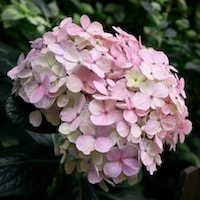
1. Hydrangea macrophylla (mophead and lacecap)
Hydrangea macrophylla are available with two distinct flower shapes - 'mopheads' with their large, round flower heads - or the flatter-shaped 'lacecaps' which feature a cluster of small flowers surrounded by an outer ring of larger, showy blooms. The petals change colour depending on the acidity of the soil.
Perfect for: A fabulous display in a garden border.
Example: Hydrangea macrophylla 'Bouquet Rose'.
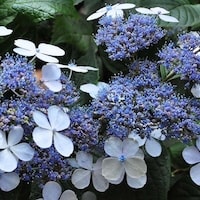
2. Hydrangea serrata
Producing an abundance of lacecap-style flowers, these pretty hydrangeas are covered in flowers until late October. Smaller and more delicate than macrophyllas, these shrubs grow to about 1m tall making them suitable for compact gardens and patios.
Perfect for: Elegant displays in large patio containers.
Example: Hydrangea serrata 'Bluebird'.
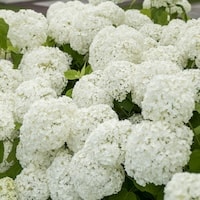
3. Hydrangea arborescens
Hydrangea arborescens is one of the most magnificent species producing rounded blooms of up to 15cm (6") diameter from midsummer to autumn. These large shrubs are particularly hardy, positively thriving in those difficult cold, shaded north-facing spots.
Perfect for: A large showy specimen for a cold, north-facing spot.
Example: Hydrangea arborescens 'Strong Annabelle'.
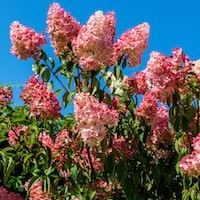
4. Hydrangea paniculata
Hydrangea paniculata cultivars have upright panicles of beautiful white, cone-shaped flowers, often changing colour throughout the season as the blooms mature. These elegant, quick-growing hydrangeas form medium-sized or even large shrubs if given the space.
Perfect for: An elegant display in shady woodland areas.
Example: Hydrangea paniculata 'Vanille Fraise'.
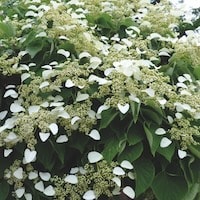
5. Hydrangea petiolaris (climbing hydrangea)
Hydrangea anomola ssp.petiolaris is the best known of the climbing hydrangeas. This deciduous climber is a popular choice for a cold, north-facing position where other plants would struggle. Thriving in tricky conditions, it blooms from late spring to early summer. For an evergreen variety, Hydrangea seemannii is a great choice but is less hardy than its deciduous cousin.
Perfect for: Climbing north facing walls and fences.
Example: Hydrangea petiolaris.
Where do hydrangeas grow best?
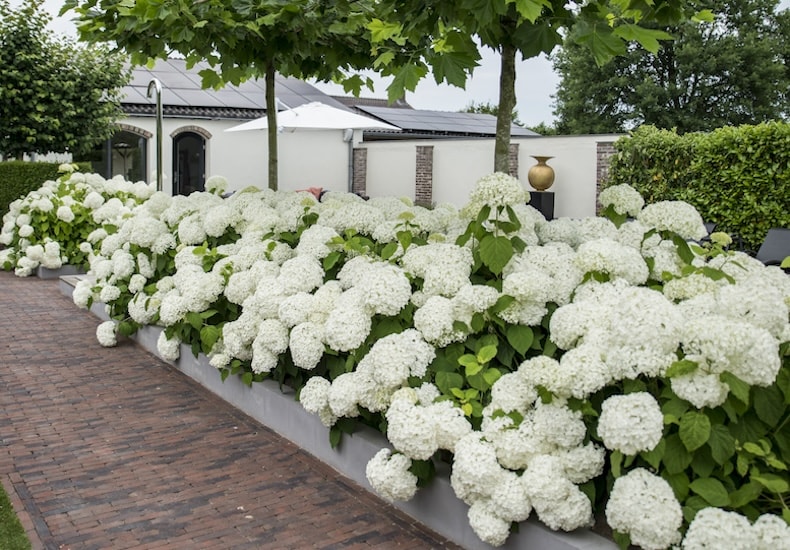
Hydrangeas brighten up shaded areas under deciduous trees
Image: Hydrangea arborescens 'Strong Annabelle' from Thompson & Morgan
Hydrangeas prefer a sunny or semi-shaded position, in a cool area of the garden which is sheltered from cold, drying winds. For this reason they’re especially useful for brightening up shaded borders and make a lovely feature in the dappled shade of woodland gardens. Try to avoid hot, sunny areas and east-facing spots where cold winds can damage the spring growth.
Grow hydrangea plants in any rich fertile, moist soil. It's a good idea to work in some well-rotted manure or compost prior to planting hydrangeas, and they will always appreciate a mulch of organic matter in spring to help conserve moisture at their roots and feed them up for them for the coming growing season. On light soils, it is a good idea to feed hydrangeas with an ericaceous fertiliser.
Can you grow hydrangeas in containers?
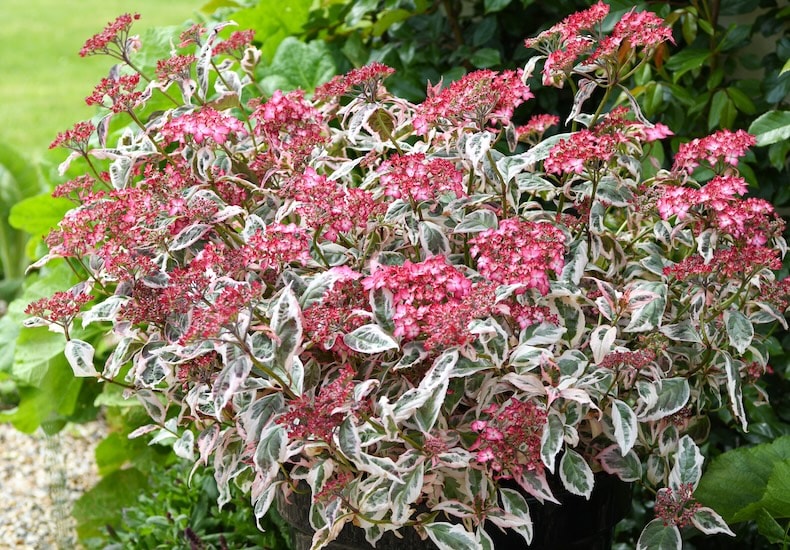
Some hydrangeas have striking foliage as well as spectacular flowers
Image: Hydrangea serrata 'Euphorbia Pink' from Thompson & Morgan
Hydrangeas can be grown in containers and make a superb patio feature. Choose a large container and move it into position before you fill it with soil and plant your shrub. Hydrangeas get large and heavy so it pays to think about their location in advance. Plant your hydrangea to the same depth as it was grown in the original pot and be sure to keep the soil moist for the first spring and summer while it gets established.
Macrophyllas are a good choice for containers, and this is a good way to control the colour of the blooms if you specifically want pink or blue. But one of the best species for container growing is Hydrangea serrata. Hydrangea serrata ‘Euphorbia Pink’ has beautiful foliage as well as two-toned lacecap-style flowers. Another good choice is Hydrangea serrata ‘Bluebird’ which has dramatic green-bronze leaves turning to dark red and purple in the autumn.
Changing the colour of hydrangea flowers
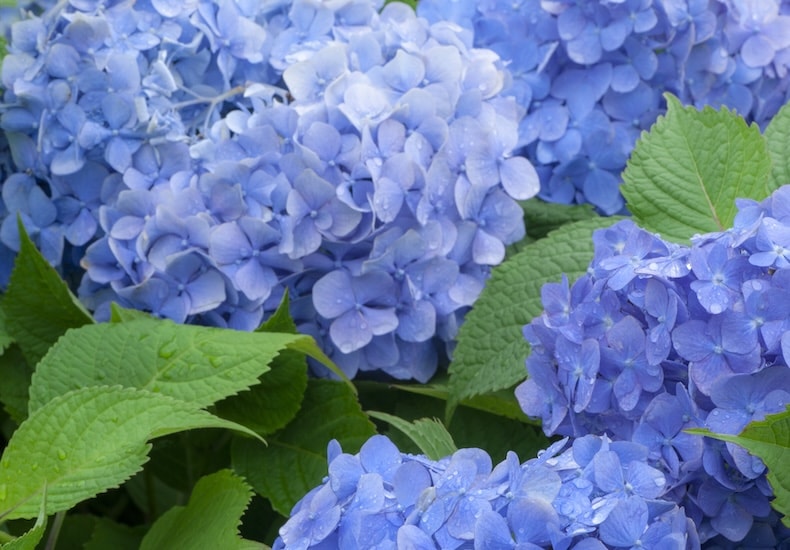
Hydrangea macrophylla flowers are deep blue on acid soils and pink on alkaline soils
Image: Hydrangea macrophylla 'Blue Danube' from Thompson & Morgan
Hydrangea macrophylla cultivars are well known for their ability to change flower colour depending on the levels of available aluminium in the soil. These levels are affected by soil pH, so on acid soils where the pH is 5.5 or less and aluminium is freely available then the flowers take on a lovely shade of blue. On soils with a higher pH, there is less aluminium available and the blooms will consequently be pink. White hydrangeas are the exception however, as these are unaffected by soil pH.
On soils that have a fairly neutral pH it is possible to bring this change about by applying a hydrangea colourant that contains aluminium sulphate to the soil. This will turn your flowers blue. It’s possible to achieve the same effect by growing hydrangeas in pots of ericaceous compost.
How to prune hydrangeas
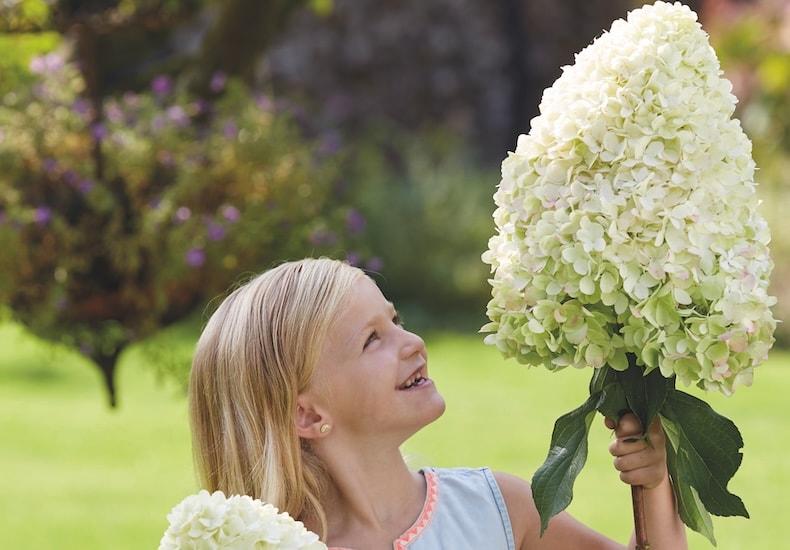
Prune your hydrangeas at the correct time for magnificent blooms
Image: Hydrangea paniculata 'Hercules' from Thompson & Morgan/©Plantipp / Visions BV, Netherlands
Shrubby hydrangeas such as Hydrangea macrophylla cultivars, H. paniculata and H. arborescens can all be treated in a similar way. Flowering on the previous year's wood, they generally need little maintenance, but pruning will certainly help to produce a better display.
Prune hydrangeas after flowering, reducing the stems to restrict their growth to the available space and to improve the shape of the plant. In cold areas leave the faded hydrangea flower heads in place until the new buds swell in spring. This helps to protect the delicate buds from frost damage.
If necessary, neglected hydrangea plants will tolerate hard pruning to form a low framework of stems in spring, however this will mean sacrificing the majority of the flowers for that year.
Climbing hydrangeas require a little training in the early years to encourage their stems to cling to walls and fences. Tie them in to their supports until they’re firmly attached - this may take several seasons. Prune climbing hydrangeas immediately after flowering by removing the faded flower heads and shortening the stems to fit the available space.
For more information and advice on growing hydrangeas, head over to our dedicated hub page and follow the links to all our best hydrangea resources.

Written by: Sue Sanderson
Plants and gardens have always been a big part of my life. I can remember helping my Dad to prick out seedlings, even before I could see over the top of the potting bench. As an adult, I trained at Writtle College where I received my degree, BSc. (Hons) Horticulture. After working in a specialist plantsman's nursery, and later, as a consulting arboriculturalist, I joined Thompson & Morgan in 2008. Initially looking after the grounds and coordinating the plant trials, I now support the web team offering horticultural advice online.Sign Up For Exclusive Special Offers




© 2025 Thompson & Morgan. All rights reserved. A division of Branded Garden Products Limited.



